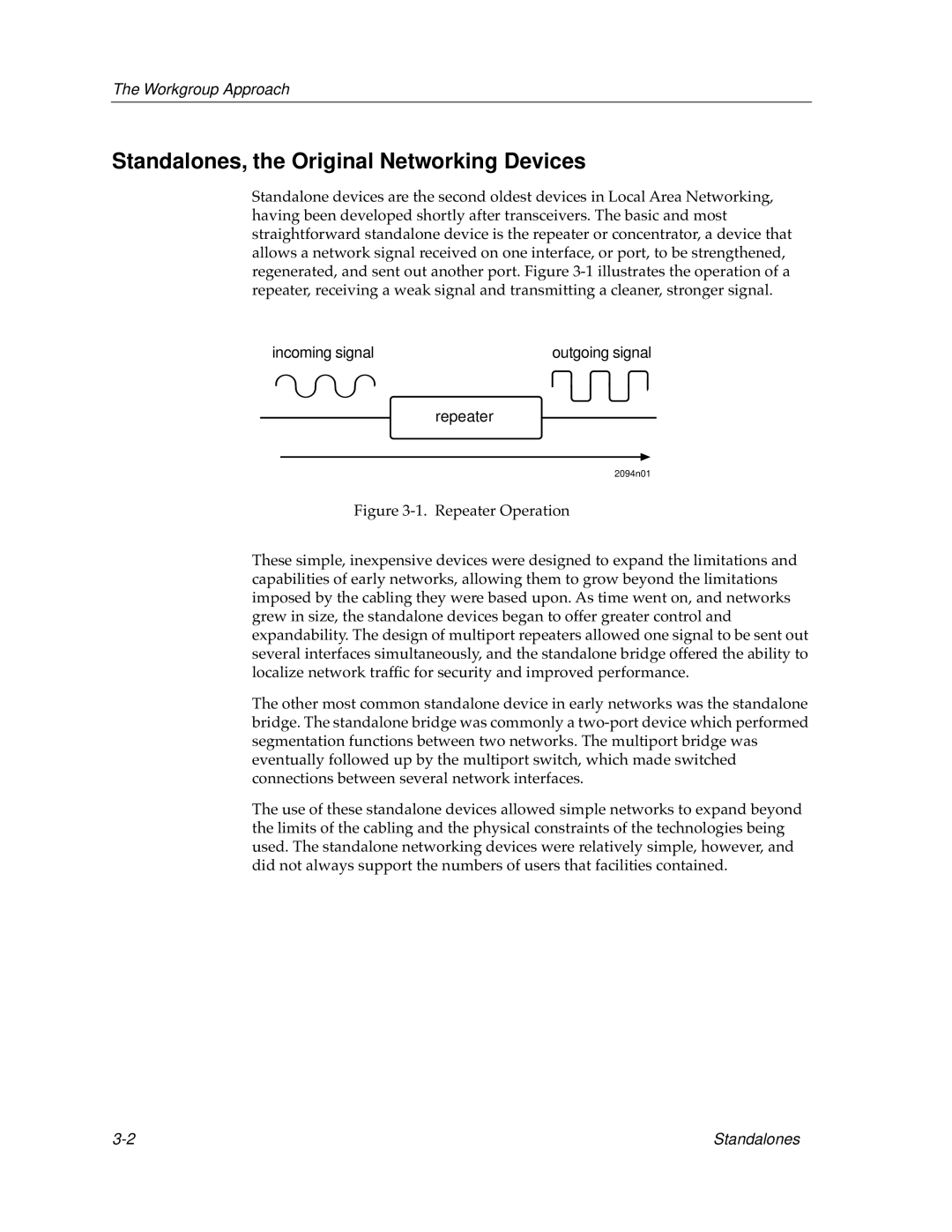
The Workgroup Approach
Standalones, the Original Networking Devices
Standalone devices are the second oldest devices in Local Area Networking, having been developed shortly after transceivers. The basic and most straightforward standalone device is the repeater or concentrator, a device that allows a network signal received on one interface, or port, to be strengthened, regenerated, and sent out another port. Figure
incoming signal | outgoing signal |
repeater
2094n01
Figure 3-1. Repeater Operation
These simple, inexpensive devices were designed to expand the limitations and capabilities of early networks, allowing them to grow beyond the limitations imposed by the cabling they were based upon. As time went on, and networks grew in size, the standalone devices began to offer greater control and expandability. The design of multiport repeaters allowed one signal to be sent out several interfaces simultaneously, and the standalone bridge offered the ability to localize network traffic for security and improved performance.
The other most common standalone device in early networks was the standalone bridge. The standalone bridge was commonly a two-port device which performed segmentation functions between two networks. The multiport bridge was eventually followed up by the multiport switch, which made switched connections between several network interfaces.
The use of these standalone devices allowed simple networks to expand beyond the limits of the cabling and the physical constraints of the technologies being used. The standalone networking devices were relatively simple, however, and did not always support the numbers of users that facilities contained.
Standalones |
